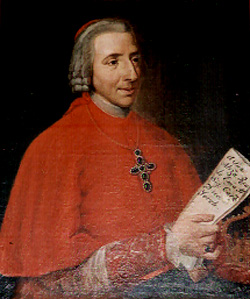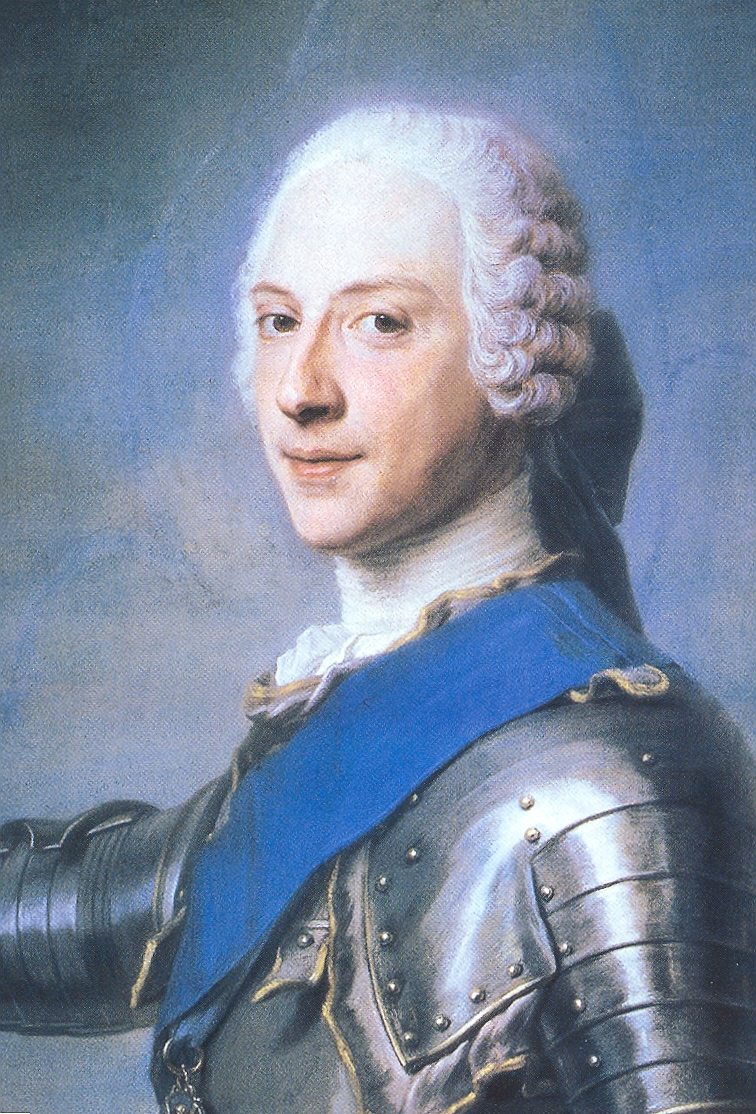|
Paul MacPherson
Paul McPherson (4 March 1756 – 24 November 1846), the first secular Scottish priest to be rector of the Scots College, Rome. Life He was born in Scalan, Aberdeenshire on 4 March 1756. At the age of thirteen, he travelled to the Scots College in Rome to study for the priesthood. Owing to illness he was sent to Royal Scots College, Valladolid in Spain where he was ordained on Easter Monday 1779. In 1793, he was nominated as agent of the Scottish mission to Rome and in August he left Scotland to take up his duties. In 1801, a Papal Decree recognised the right of the British colleges to appoint national superiors, McPherson became the first rector of the Scots College Rome from the ranks of the Scottish secular clergy. McPherson wished to return to Scotland but it was not until 1827 after his replacement, Angus Macdonald, the new Rector, arrived that he was able to leave Rome. Around 1834, the vicars apostolic of Scotland sent the seventy-eight year old McPherson to Rome to delive ... [...More Info...] [...Related Items...] OR: [Wikipedia] [Google] [Baidu] |
Scots College, Rome
The Scots College (or The Pontifical Scots College) (Italian: Il Pontificio Collegio Scozzese) in Rome is the main seminary for the training of men for the priesthood from the dioceses of the Roman Catholic Church in Scotland. History The Scots College was established by Clement VIII on 5 December 1600, when it was assigned the revenue of the old Scots' hospice. At first the college was sited in a little house in what is known today as Via del Tritone, opposite the church of Santa Maria di Costantinopoli. In 1604 it was transferred to Via Felice, now called Via delle Quattro Fontane, where a bust of the last of the Stuarts, Henry Cardinal Duke of York can be seen. The college remained there until 1962. From 1615 to 1773, the Rectors of the Scots College were drawn from the ranks of the Society of Jesus. After the Jesuits were suppressed in 1773 by Clement XIV, by his brief ''Dominus ac Redemptor'', the College was administered by a series of Italian clerics until 1800 and the ... [...More Info...] [...Related Items...] OR: [Wikipedia] [Google] [Baidu] |
Scalan
The Scalan was once a seminary and was one of the few places in Scotland where the Roman Catholic faith was kept alive during the troubled times of the 18th century. History For much of the 18th century, the college at Scalan in the Braes of Glenlivet was the only place in Scotland where young men were trained to be priests, the so-called " heather priests". From 1717 to 1799, over a hundred were trained despite numerous attacks by Hanoverian soldiers. The college played a vital role in keeping the traditional Catholic faith alive in northern Scotland. It was named after the Gaelic word for turf sheilings ("galan") found in the Braes during that period. In 1799, the college was moved to a less remote site, Aquhorthies College, which had larger premises and more accommodation. Alexander Geddes, Scottish theologian and scholar, was among the famous figures who studied at the college. George James Gordon, known as the "heather priest" was educated here and then taught here as a n ... [...More Info...] [...Related Items...] OR: [Wikipedia] [Google] [Baidu] |
Royal Scots College
The Royal Scots College (Real Colegio de Escoceses) is a major seminary in Salamanca, Spain, for the Catholic Church in Scotland. It was located originally at Madrid, then Valladolid, and then Salamanca (from 1988). History The Royal Scots College was founded at Madrid in 1627 by Colonel William Semple of Lochwinnoch and his wife, Doña María de Ledesma. Semple had spent his life in the military and diplomatic service of the Spanish crown. The deed of foundation stipulated that the college was for students "Scottish by birth, preferably those of superior character and virtue and those who promise more fruit in the welfare of souls, and they have to spend whatever time may be necessary in studying Grammar and Philosophy, Theology, Controversies and Sacred Scripture, so that when they are well versed in all of these, they may proceed to the said Kingdom of Scotland to preach the Gospel and convert heretics... when they leave the said seminary for this purpose, others are to be re ... [...More Info...] [...Related Items...] OR: [Wikipedia] [Google] [Baidu] |
Valladolid
Valladolid () is a Municipalities of Spain, municipality in Spain and the primary seat of government and de facto capital of the Autonomous communities of Spain, autonomous community of Castile and León. It is also the capital of the province of Valladolid, province of the same name. It has a population around 300,000 people (2021 est.). Population figures from 1 January 2013. The city is located roughly in the centre of the northern half of the Iberian Peninsula's Meseta Central, at the confluence of the Pisuerga River, Pisuerga and Esgueva rivers before they join the Duero, surrounded by winegrowing areas. The area was settled in pre-Roman times by the Celtic Vaccaei people, and then by Ancient Rome, Romans themselves. The settlement was purportedly founded after 1072, growing in prominence within the context of the Crown of Castile, being endowed with fairs and different institutions such as a collegiate church, University of Valladolid, University (1241), Court (royal), Ro ... [...More Info...] [...Related Items...] OR: [Wikipedia] [Google] [Baidu] |
Henry Benedict Stuart
Henry Benedict Thomas Edward Maria Clement Francis Xavier Stuart, Cardinal Duke of York (6 March 1725 – 13 July 1807) was a Roman Catholic cardinal, as well as the fourth and final Jacobite heir to publicly claim the thrones of Great Britain and Ireland. Unlike his father, James Francis Edward Stuart, and brother, Charles Edward Stuart, Henry made no effort to seize the thrones. After Charles's death in January 1788 the Papacy did not recognise Henry as the lawful ruler of Great Britain and Ireland, but referred to him as the Cardinal Duke of York. He spent his life in the Papal States and had a long career in the clergy of the Roman Catholic Church, rising to become the Dean of the College of Cardinals and Cardinal-Bishop of Ostia and Velletri. At the time of his death he was (and still is) one of the longest-serving cardinals in the Church's history. In his youth, Henry's father made him Duke of York (in the Jacobite Peerage), and it was by this title that he was bes ... [...More Info...] [...Related Items...] OR: [Wikipedia] [Google] [Baidu] |
Sant'Andrea Degli Scozzesi
Sant' Andrea degli Scozzesi (English: St Andrew of the Scots) is a former Catholic church in Rome, near Piazza Barberini on Via delle Quattro Fontane. Once a haven for Scottish Catholics in Rome, it was deconsecrated in 1962 and still stands. History The church was built under Pope Clement VIII in 1592 with the title ''S.Andrea e S.Margherita regina''. It was constructed for the Scottish expatriate community in Rome, especially for those intended for priesthood. The adjoining hospice was a shelter for Catholic Scots who escaped their country because of religious persecution. In 1615, Pope Paul V gave the hospice and the nearby Scots College to the Jesuits. It was rebuilt in 1645. They became more important when James Francis Edward Stuart, the Old Pretender, set his residence in Rome in 1717. It was abandoned during the French occupation of Rome in the late 18th century. In 1820, religious activity was resumed, but no longer by the Jesuits. It was reconstructed in 1869 by Luigi ... [...More Info...] [...Related Items...] OR: [Wikipedia] [Google] [Baidu] |
1756 Births
Events January–March * January 16 – The Treaty of Westminster is signed between Great Britain and Prussia, guaranteeing the neutrality of the Kingdom of Hanover, controlled by King George II of Great Britain. *February 7 – Guaraní War: The leader of the Guaraní rebels, Sepé Tiaraju, is killed in a skirmish with Spanish and Portuguese troops. * February 10 – The massacre of the Guaraní rebels in the Jesuit reduction of Caaibaté takes place in Brazil after their leader, Noicola Neenguiru, defies an ultimatum to surrender by 2:00 in the afternoon. On February 7, Neenguiru's predecessor Sepé Tiaraju has been killed in a brief skirmish. As two o'clock arrives, a combined force of Spanish and Portuguese troops makes an assault on the first of the Seven Towns established as Jesuit missions. Defending their town with cannons made out of bamboo, the Guaraní suffer 1,511 dead, compared to three Spaniards and two Portuguese killed in battle. * Febr ... [...More Info...] [...Related Items...] OR: [Wikipedia] [Google] [Baidu] |
1846 Deaths
Events January–March * January 5 – The United States House of Representatives votes to stop sharing the Oregon Country with the United Kingdom. * January 13 – The Milan–Venice railway's bridge, over the Venetian Lagoon between Mestre and Venice in Italy, opens, the world's longest since 1151. * February 4 – Many Mormons begin their migration west from Nauvoo, Illinois, to the Great Salt Lake, led by Brigham Young. * February 10 – First Anglo-Sikh War: Battle of Sobraon – British forces defeat the Sikhs. * February 18 – The Galician slaughter, a peasant revolt, begins. * February 19 – United States president James K. Polk's annexation of the Republic of Texas is finalized by Texas president Anson Jones in a formal ceremony of transfer of sovereignty. The newly formed Texas state government is officially installed in Austin. * February 20– 29 – Kraków uprising: Galician slaughter – Polish nationalists stage an uprising in the Free City of Krakó ... [...More Info...] [...Related Items...] OR: [Wikipedia] [Google] [Baidu] |




